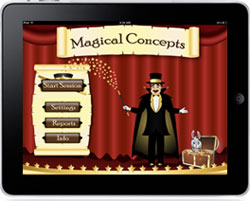Those readers who read my earlier posts know that I began developing an app nearly a year ago. I had hired a local company called Zenuity. They had an impressive office in a building about ten minutes from my home. The first person I met was Earl Mincer. He was the lead tech man of the company and it’s primary salesman for convincing one that Zenuity can get the job done. I told him about my app idea and he said his company could easily handle the job. He assured me that his creative staff was excellent. A mock-up was made before we proceeded further. Once that was done, we had a meeting so that my husband, who is in the high tech industry, could ask Earl questions relevant to the technology that would be used. My husband felt good that Earl knew what he was talking about. We then agreed on the cost and terms of the contract. I was excited that my app idea would soon come to fruition. My excitement was premature. The app should have been completed by December. By December only a couple of drawings had been done. Excuses were made up by Allison, the project manager, as to why nothing was moving. After numerous frustrating phone calls and emails, I requested a new project manager. She was replaced by Kitty V’Marie. Kitty was also the office manager. Kitty seemed to have a better handle on the inner workings as they related to my app, but she was also evasive when I asked about the progress of the app. By January, my patience was beginning to run out. The only portion of the app the company to had to show for its efforts were a few simple drawings. By February, I had lost complete confidence in the company’s abilities to produce an app. I asked to meet with the heads of the company. Joining the meeting was the company’s owner, Joel Kellman, Kitty and Earl. I told Joel that it did not seem like the company was up to the task of producing an app of my kind. Joel asked a lot of questions of Kitty, Earl and me. He said he was sure that the progress of the app would now pick up. Come April, nothing had changed. I called another meeting to tell them that I was ready to part ways with them. Joel insinuated that my app had morphed into something more complicated and costly. He hinted around for more money. I did not bite. I told him that I was terminating our relationship and requested a full refund of the monies. Joel said that he needed to talk the accountant and his lawyer. A week later the company was out of business. Did I lose my money? Nearly, but I got lucky. I had paid for the deposit with a credit card. The credit card company issued me a full refund after performing an investigation.
How does one avoid getting caught in a scam of this kind?
1. First, I would google the company’s name and see what comes up. When I started to have suspicions about the company, I googled Joel Kellman and Earl Mincer. I found numerous complaints about them and the other diverse companies they had set up in the area.
2. I would ask to see apps the company had completed. This way you will be able to see the quality of their work and if their skills are in line with what you will need.
3. Get in touch with someone who had an app developed by the company. Ask that person about their experiences with the app developer.
4. Schedule a meeting with the person who will be working on your app. This does not mean the project manager. This means the person who will be working on the app directly. The conversation with this person may help you decide if this is someone you want to work with.
5. Ask the person for a project timeline. How long will it take to complete the app?
6. Discuss the responsibilities that you will each have in getting your app completed and into the app store.
7. I had worked out a payment schedule with Earl, but my error was giving too much money at the outset. I would work out a payment schedule that broke payments down into smaller bits. For instance, the first payment would be for seeing the completed drawings of the characters. This way if something goes wrong you’ve laid out less money. Also, the company has a greater incentive for moving the project along.
8. Set up a weekly schedule to go over any questions you or the developer may have. These meetings should also give you an idea of where the developer is in the process.

